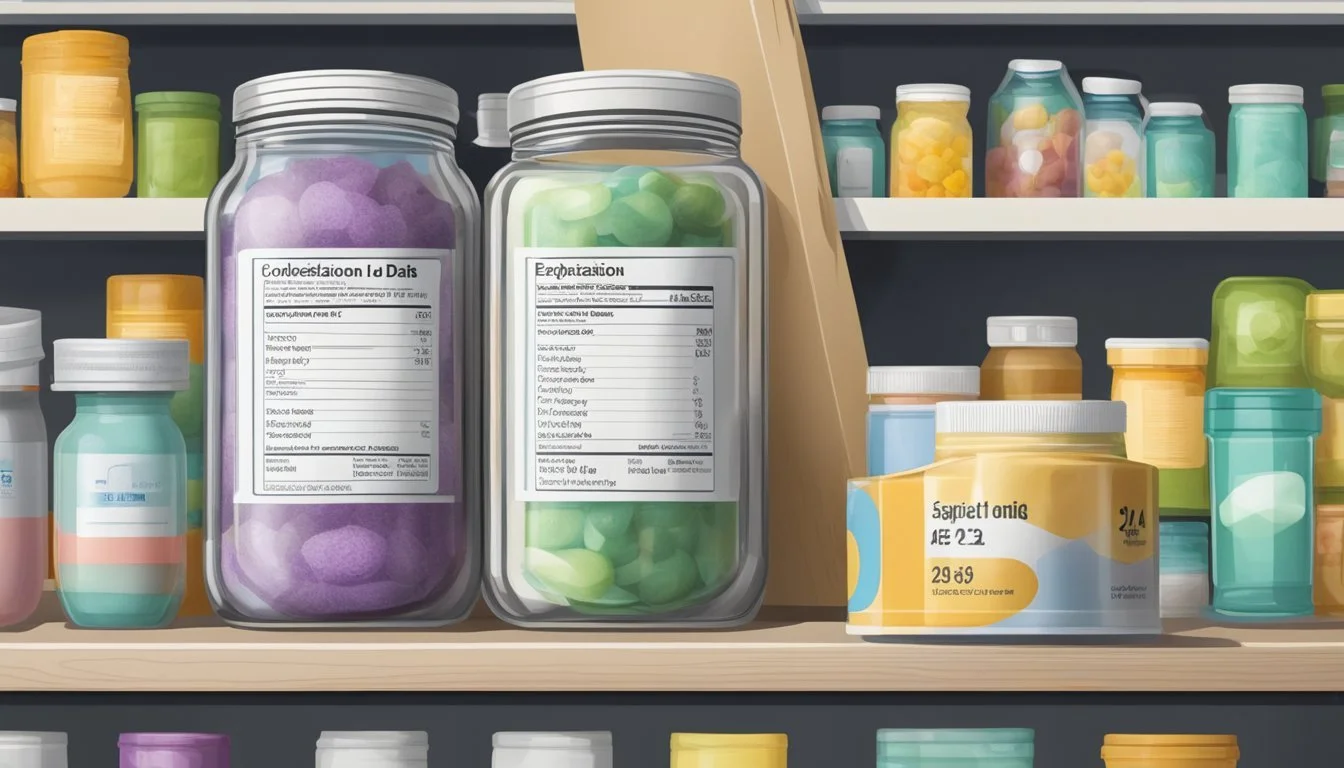Does Gelatin Go Bad?
Shelf Life and Storage Tips
Gelatin, a versatile ingredient used in various culinary applications, does have a shelf life and can indeed go bad. Whether you have unflavored gelatin packets in your pantry or pre-made gelatin desserts, it's important to understand storage requirements and expiration dates. The shelf life of gelatin typically ranges from 2-3 years after its manufacturing date, but proper storage can extend its usability even beyond this timeframe.
Improper storage of gelatin can lead to spoilage. Keeping gelatin away from heat, direct sunlight, and moisture is crucial to maintaining its quality. By ensuring these storage conditions, gelatin can retain its gelling efficacy and remain safe for consumption well past its printed expiration date.
Understanding the signs of gelatin spoilage is key. Degradation might occur if the gelatin has been exposed to unfavorable conditions, impacting its ability to set properly. Whether in powdered, sheet form, or already prepared, knowing when gelatin has gone bad can prevent culinary disappointments and ensure your dishes remain successful.
Understanding Gelatin
Gelatin, a versatile ingredient, originates from collagen and has diverse uses in culinary arts. It offers unique properties that make it indispensable in various culinary applications.
Composition and Properties
Gelatin is derived from collagen, a protein found in animal connective tissues. It is composed of amino acids, primarily glycine and proline, which are crucial for skin, hair, and joint health. When gelatin is mixed with water, it forms a semi-solid gel due to its gelling properties.
Gelatin comes in two primary forms: powdered and sheet. Powdered gelatin is usually preferred for its convenience, while sheet gelatin is common in professional kitchens for its precise measurement and clarity. Gelatin's melting point is low, making it ideal for dishes that require a smooth, melt-in-the-mouth texture.
Culinary Applications
Gelatin plays a pivotal role in creating various gelatin desserts, such as jellies and puddings, due to its gelling capabilities. It is also essential in making candies like gummies, where it provides elasticity and chewiness.
In addition to desserts and candies, gelatin is a key ingredient in marshmallows, where it helps achieve their characteristic spongy texture. It is also used in making savory dishes, such as aspic, where it's valued for its ability to encapsulate flavors and create a solid form.
Bartenders utilize gelatin for creating layered and aesthetically pleasing drinks. Its versatility and functional properties make it a staple in both home and professional kitchens.
Shelf Life and Expiration
Gelatin, whether in powdered, sheet, or prepared form, has varying shelf lives. Factors such as storage conditions and whether the gelatin is sealed or opened play key roles in determining its longevity.
Shelf Life of Gelatin Types
Powdered Gelatin: Unopened powdered gelatin stored in a cool, dry pantry can remain viable for one to two years past its printed use-by or best-before date. Once opened, it should be kept in an airtight container to maintain its quality.
Sheet Gelatin: Sheet gelatin has a similar shelf life to powdered gelatin and can last indefinitely if stored in a cool, dry place. Airtight storage is essential to prevent moisture degradation.
Prepared Gelatin: Homemade or store-bought ready-to-eat gelatin desserts have a shorter shelf life, typically lasting about a week when refrigerated. Always check for signs of spoilage like changes in color, texture, or smell before consumption.
In summary, while gelatin can last a long time under proper storage conditions, it's vital to observe expiry dates and signs of spoilage to ensure safety.
Storage Guidelines
Proper storage is crucial for prolonging the shelf life of gelatin. Factors such as temperature, humidity, and container type significantly impact its longevity.
Optimal Storage Conditions
Powdered Gelatin: Store unopened powdered gelatin in a pantry at room temperature. Use an airtight container to avoid moisture and odors. It can last up to a year past its use-by date if stored properly.
Sheet Gelatin: Keep sheet gelatin in a cool, dry place. Airtight containers or ziplock bags work well to maintain its quality. Ensure the gelatin remains free from exposure to humidity.
Prepared Gelatin: Once prepared, gelatin desserts should be refrigerated. Cover them with plastic wrap or store them in airtight containers to prevent them from absorbing fridge odors.
Avoid freezing gelatin as it may lead to texture changes.
Identifying Spoilage
Recognizing when gelatin has gone bad is crucial for maintaining food safety. Key indicators include changes in appearance, texture, and smell.
Visual and Textural Changes
Spoiled gelatin may show signs of mold, such as fuzzy or slimy spots. These are immediate indicators that the gelatin should be discarded.
Changes in texture can also signal spoilage. Fresh gelatin should be consistent and firm. If it becomes excessively soft, gooey, or develops a gritty texture, it is likely spoiled.
Color change is another spoilage sign. Fresh gelatin is usually clear or uniformly colored. An off-color or spots of discoloration indicate that it has gone bad.
A sour or unpleasant smell can also be a sign of spoiled gelatin. Always discard gelatin that smells off to avoid potential health risks.
Safety and Health Considerations
When it comes to gelatin, proper storage and handling are crucial to prevent potential health risks. Key factors include recognizing signs of spoilage and understanding the risks associated with consuming expired gelatin.
Consumption of Expired Gelatin
Expired gelatin can pose several health risks due to potential bacterial growth and mold growth. If gelatin has been exposed to moisture or not stored correctly, it can become a breeding ground for bacteria, which may lead to foodborne illnesses.
One clear sign that gelatin has gone bad is a change in smell. An off or sour odor often indicates that bacterial activity has started.
Visually, mold growth is a significant red flag; any discoloration or fuzzy spots mean the gelatin is unsafe to consume. Always store gelatin in a dry, cool place, away from heat and light, to maximize its shelf life.
Using airtight containers can also help keep moisture out, further preventing bacterial and mold growth. Consequently, paying attention to storage conditions and shelf life is essential to ensure gelatin remains safe for consumption.
Practical Tips for Gelatin Use
Gelatin is a versatile ingredient used in many recipes, from desserts to soups and sauces. Here are some practical tips to ensure the best results in your culinary creations.
Preparation and Cooking
Preparation: Both powdered gelatin and sheet gelatin must be bloomed before use. For powdered gelatin, sprinkle it over cold water and let it sit for 5-10 minutes. For sheet gelatin, soak it in cold water until it becomes soft and pliable. Bloomed gelatin ensures even melting and smoother texture.
Cooking: Once bloomed, gelatin should be dissolved in warm or hot liquid. Avoid boiling gelatin as this can affect its gelling properties. When preparing homemade gelatin desserts or sauces, allow the mixture to cool slightly before refrigerating to set.
Storage: Properly storing leftover or prepared gelatin extends its shelf life. Store dry, unopened gelatin in a cool, dry place, away from moisture and heat. Opened gelatin should be kept in an airtight container and used within three months. For homemade gelatin, keep it refrigerated and consume within a week.
Signs of Spoilage: Always inspect your gelatin before use. Indicators of spoilage include an off smell, discoloration, or altered texture. Using fresh gelatin will yield the best results in your dishes.
Additional Uses of Gelatin
Gelatin offers a range of benefits beyond its traditional culinary roles, with significant applications in health and cosmetics. These applications leverage the unique properties of gelatin to enhance both personal wellness and skincare routines.
Health
Gelatin plays a crucial role in promoting joint health due to its rich content of collagen, a protein essential for maintaining healthy connective tissues. Studies indicate that regular intake of gelatin may help reduce joint pain and improve the overall function of joints. Collagen supplements often use gelatin to support the repair and maintenance of cartilage, boosting mobility and comfort in individuals with joint concerns.
Cosmetics
In the cosmetics industry, gelatin is popular for its beneficial effects on the skin. Rich in collagen, it helps in keeping the skin hydrated, firm, and smooth. Gelatin-based face masks can minimize wrinkles and fine lines by nourishing the skin and enhancing its elasticity. Additionally, it serves as a key ingredient in various skincare products formulated to rejuvenate and maintain a healthy, youthful complexion.







